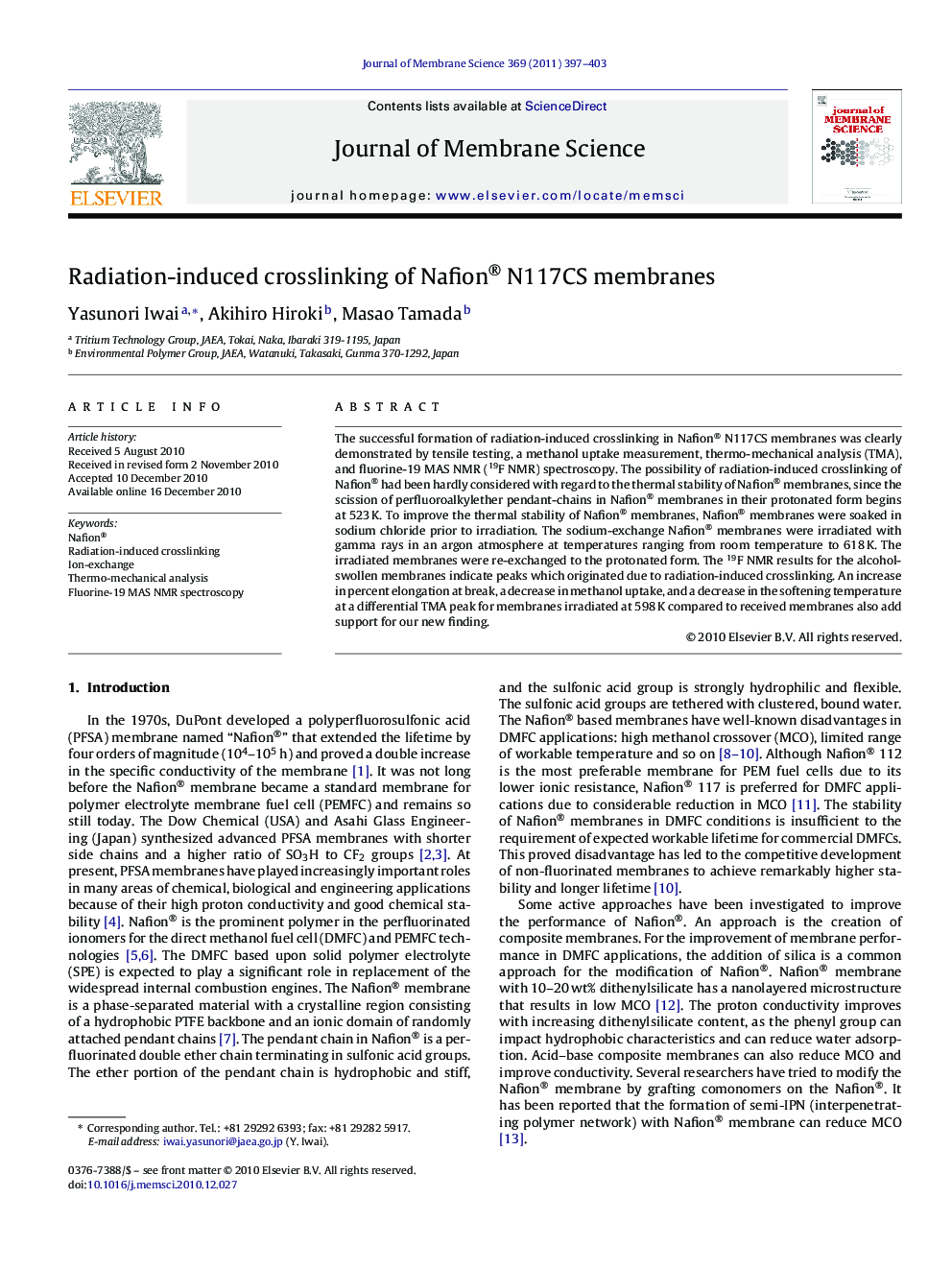| کد مقاله | کد نشریه | سال انتشار | مقاله انگلیسی | نسخه تمام متن |
|---|---|---|---|---|
| 635983 | 1456110 | 2011 | 7 صفحه PDF | دانلود رایگان |

The successful formation of radiation-induced crosslinking in Nafion® N117CS membranes was clearly demonstrated by tensile testing, a methanol uptake measurement, thermo-mechanical analysis (TMA), and fluorine-19 MAS NMR (19F NMR) spectroscopy. The possibility of radiation-induced crosslinking of Nafion® had been hardly considered with regard to the thermal stability of Nafion® membranes, since the scission of perfluoroalkylether pendant-chains in Nafion® membranes in their protonated form begins at 523 K. To improve the thermal stability of Nafion® membranes, Nafion® membranes were soaked in sodium chloride prior to irradiation. The sodium-exchange Nafion® membranes were irradiated with gamma rays in an argon atmosphere at temperatures ranging from room temperature to 618 K. The irradiated membranes were re-exchanged to the protonated form. The 19F NMR results for the alcohol-swollen membranes indicate peaks which originated due to radiation-induced crosslinking. An increase in percent elongation at break, a decrease in methanol uptake, and a decrease in the softening temperature at a differential TMA peak for membranes irradiated at 598 K compared to received membranes also add support for our new finding.
Research highlights▶ To improve the thermal stability, Nafion® membranes were soaked in sodium chloride. ▶ The sodium-exchange Nafion® membranes were irradiated with gamma rays at 598 K. ▶ After irradiation, the membranes were re-exchanged to the protonated form. ▶ Radiation-induced crosslinking was produced in Nafion® N117CS membranes.
Journal: Journal of Membrane Science - Volume 369, Issues 1–2, 1 March 2011, Pages 397–403